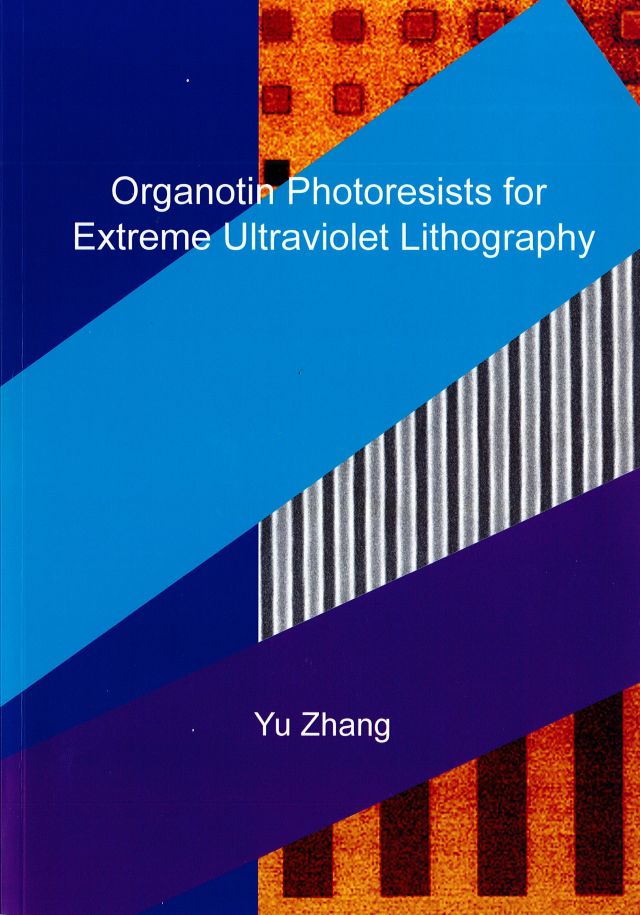Organotin Photoresists for extreme ultraviolet lithography
Photoresists are photosensitive materials that are used to transfer patterns in photolithography. New types of photoresists are needed for the next generation of photolithography, which uses extreme ultraviolet radiation (EUV, wavelength 13.5 nm). Organotin materials have drawn great attention in the photoresist field, not only due to their potential in industrial application but also because of the interest from the fundamental point of view. Especially, tin-containing molecules absorb EUV light efficiently. This thesis focuses on two kinds of organotin materials as model photoresists : tin oxo cages and tin(II) carboxylate molecules. We study the interaction of EUV and short-wavelength (deep) UV photons with the two types of photoresist candidates. Different experimental techniques, such as X-ray photoelectron spectroscopies, mass spectrometry, infrared spectroscopy and UV-Vis spectroscopy were used to investigate the photon-induced chemistry in the photoresist films. The chemical reaction mechanisms in the photoresists are proposed. Comparison between EUV and DUV photochemistry and reaction yield were made.









